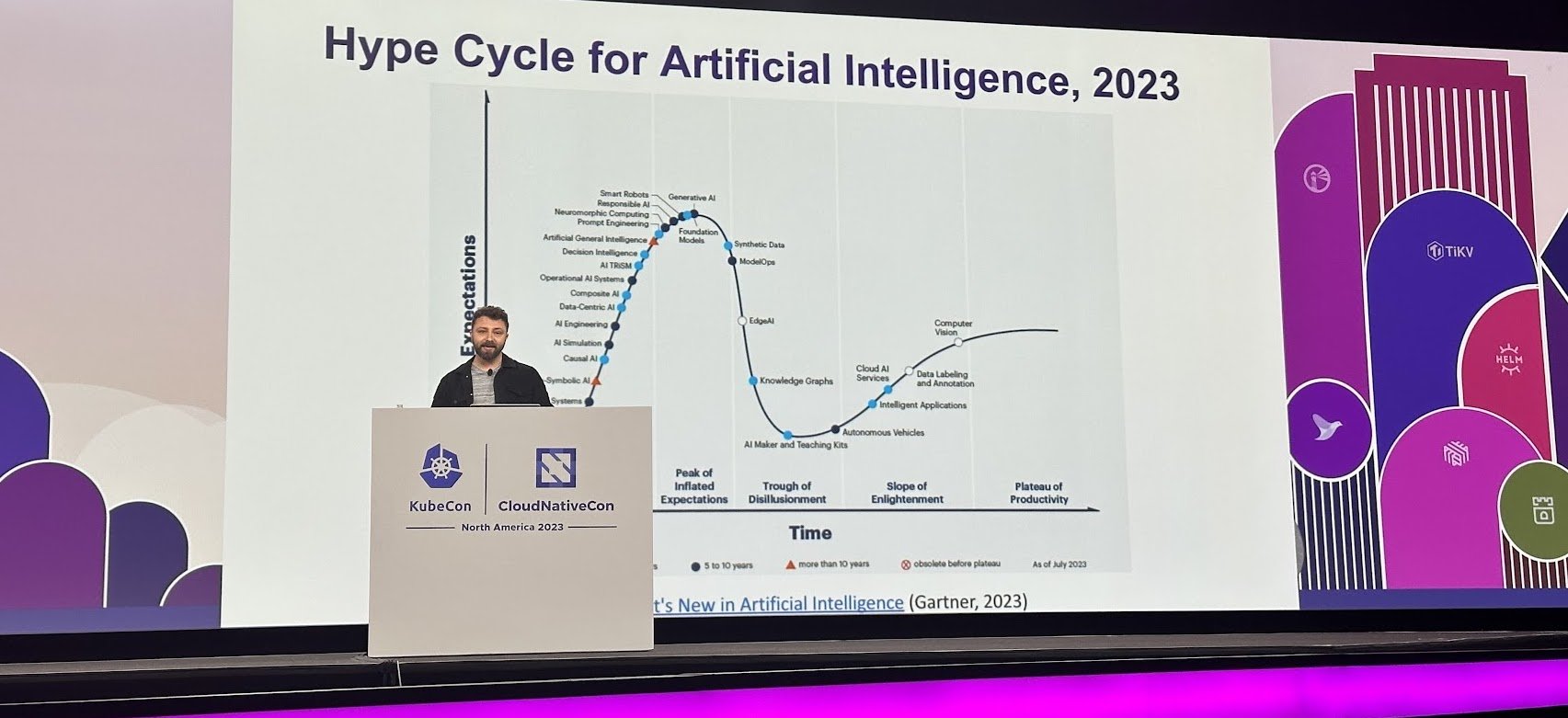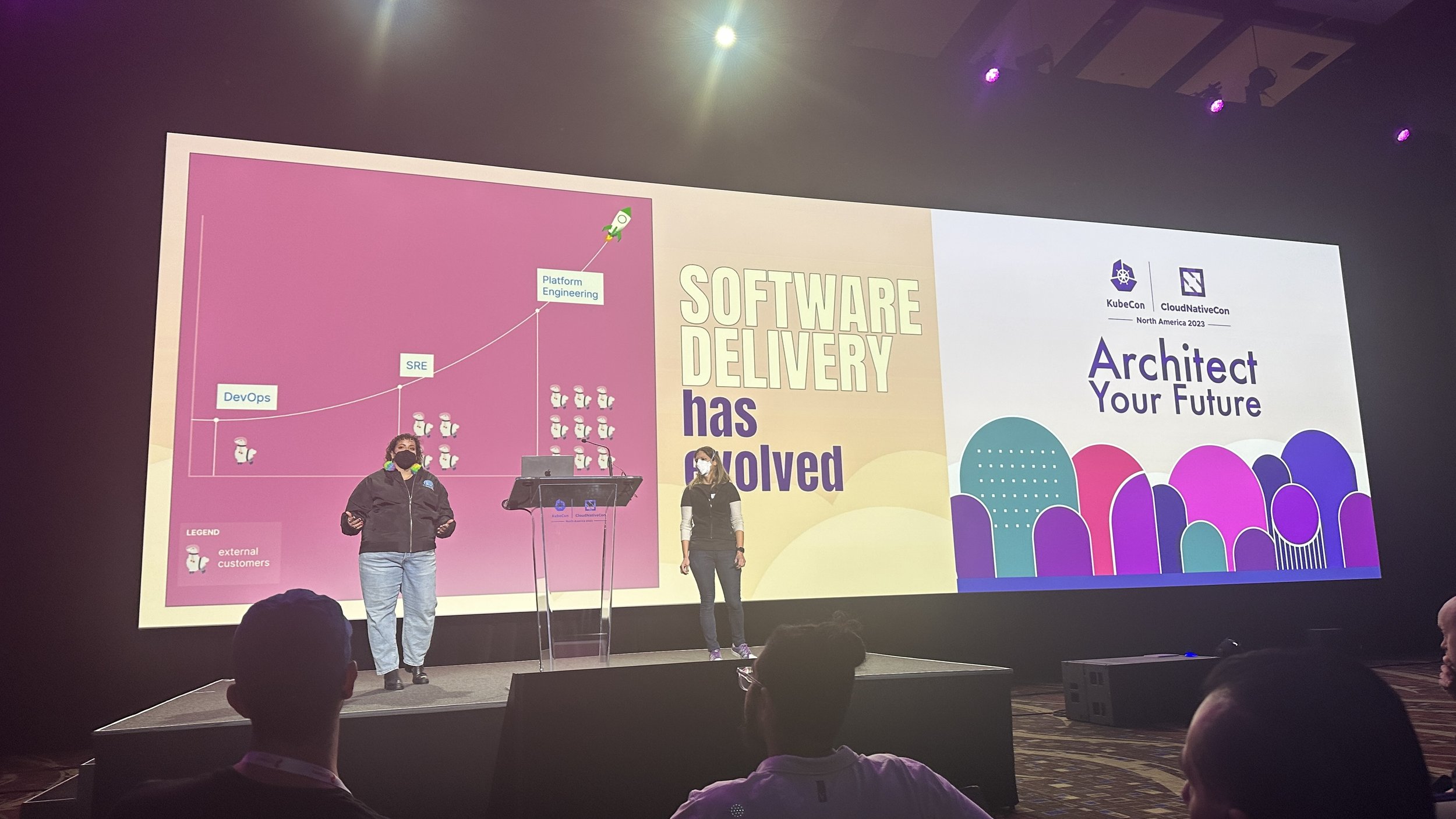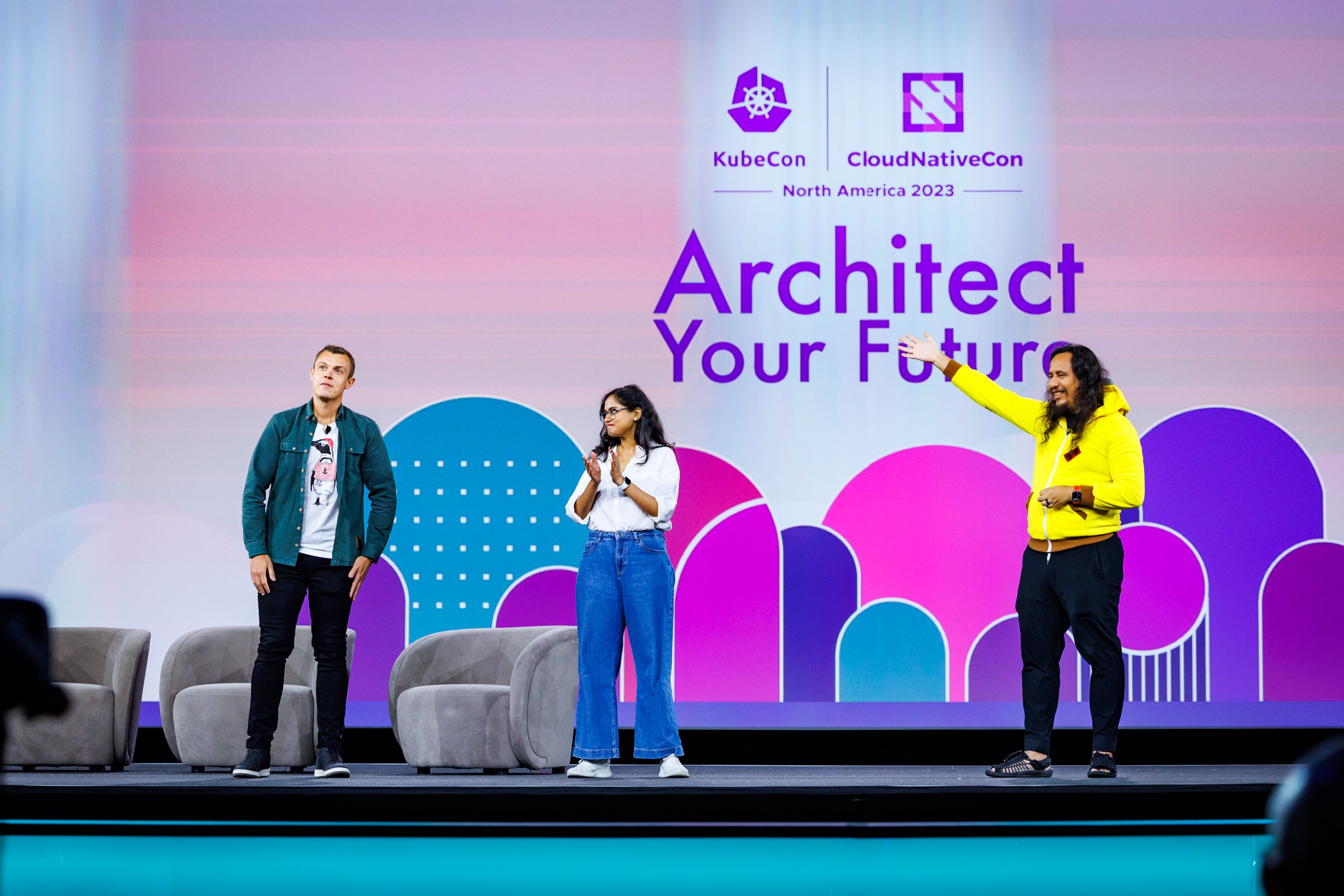KubeCon+CloudNativeCon Chicago: A Blend of AI, Platform Engineering, and Enhanced Security
Attending KubeCon+CloudNativeCon North America 2023 in Chicago was a deep dive into the evolving landscape of cloud-native technology, providing valuable insights into Generative AI, Platform Engineering, and the latest in security practices. In this post, I will try to summarize these three top trends.
Generative AI: Revolutionizing Workloads and Sustainability
The integration of Generative AI with Kubernetes was a standout topic. Discussions focused on the potential for Kubernetes to efficiently manage the complex and resource-intensive workloads of AI models, particularly in the Generative AI space. This integration is critical as it paves the way for more sophisticated, real-time AI applications in cloud environments.
But the conversation didn't stop at technical capabilities. There was a significant focus on the environmental impact of these technologies. As AI models become more complex, their energy consumption skyrockets. This raises concerns about sustainability, prompting discussions on how to build AI solutions that are not only powerful but also environmentally responsible.
The security aspect of Generative AI also garnered attention. With AI becoming more integral to business processes, ensuring the integrity and security of these systems is paramount.
Platform Engineering: Empowering Developers with Backstage and the Need for Community-Driven Reference Architectures
Platform Engineering emerged as a transformative approach, shifting the focus from infrastructure management to enabling developers to add direct value. This approach has been gaining momentum, as evidenced by the rapid adoption of Backstage. With its fourfold growth this year, Developer Portals are reshaping how developers interact with and utilize cloud-native technologies.
Backstage serves as a centralized platform where developers can access tools, resources, and services. This consolidation significantly enhances developer productivity and experience. The conference showcased various case studies and success stories, illustrating how Platform Engineering, aided by tools like Backstage, creates more autonomous and efficient development environments.
The Need for Standardized Reference Architectures in Platform Engineering
A key discussion point under this topic was the urgent need for community-driven reference architectures in the realm of Platform Engineering. Given the myriad ways to stitch together Internal Developer Platforms (IDPs), there is a growing recognition that a lower barrier to entry is essential for broader adoption and efficiency.
The community plays a crucial role in this. By coming together to define and standardize reference architectures, we can simplify the complexity inherent in building and managing IDPs. These architectures would serve as blueprints, guiding organizations in creating platforms that are both robust and user-friendly, tailored to the specific needs of developers.
Establishing these standardized reference architectures requires collaboration among experts, practitioners, and organizations. The goal is to create a common framework that encapsulates best practices, preferred tooling options, and design patterns. This would not only streamline the process of setting up IDPs but also ensure consistency and reliability across different deployments.
The conference underscored the importance of such collaborative efforts in advancing the field of Platform Engineering. By pooling our collective knowledge and experience, we can make Platform Engineering more accessible, reducing the time and resources required to build effective developer platforms.
Security: Reinforcing the Software Supply Chain
The final critical theme of the conference was the security of the software supply chain. In an era where software vulnerabilities can have far-reaching impacts, the importance of securing the software supply chain has never been greater. Discussions focused on best practices for maintaining security, particularly the adoption and implementation of Software Bill of Materials (SBOMs).
SBOMs provide a comprehensive record of the components used in software, enhancing transparency and traceability. This is crucial for quickly addressing vulnerabilities when they arise. The conference highlighted emerging tools and methodologies to strengthen software supply chains against the backdrop of increasing cyber threats.
A Personal Milestone: Becoming the KubeCon+CloudNativeCon Co-Chair
A thrilling highlight of my experience at KubeCon+CloudNativeCon was the moment I officially stepped into the role of co-chair for the conference. This was not just a routine change of guard; it marked a significant personal and professional milestone in my journey with cloud-native technologies.
The transition was made memorable with a brief, yet impactful, tour to the keynote stage. Here, I had the honor of accepting my new role in front of an audience that represents the brightest minds in the cloud-native ecosystem. It was a moment of profound responsibility and excitement, underscoring the trust and expectations placed in me to steer one of the most influential conferences in the tech world.
This new role is both a challenge and an opportunity to contribute more significantly to the cloud-native community. I'm looking forward to working with the community, the other co-chairs, and the organizing group to shape the vision and direction of future KubeCons.
KubeCon+CloudNativeCon Chicago was more than just a conference; it was a confluence of ideas, a showcase of technological advancements, and for me personally, a new chapter as the co-chair. The journey ahead is filled with possibilities, and I am eager to contribute to shaping the future of cloud-native computing.



